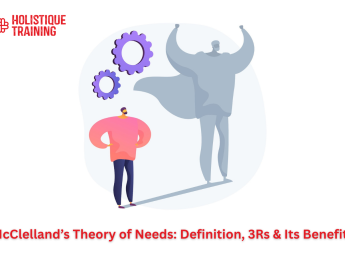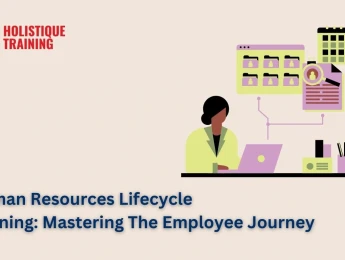- Table of Contents
- Introduction
- What Is Employee Engagement?
- Why Is Cultural Change Important?
- The Challenges of Creating a Culture of Engagement
- 1. Leadership Alignment and Consistency
- 2. Cultural Diversity and Inclusivity
- 3. Resistance to Change
- 4. Workload and Time Constraints
- 5. Lack of Resources and Budget Constraints
- 6. Measuring Engagement Effectiveness
- 7. Remote and Hybrid Work Challenges
- 8. Burnout and Mental Health
- How to Create a Culture of Engagement at Your Organisation
- 1. Clarify and Communicate Organisational Purpose
- 2. Foster Open and Transparent Communication
- 3. Encourage Employee Growth and Development
- 4. Recognise and Reward Achievements
- 5. Promote Work-Life Balance
- 6. Empower Employees
- Engaging Your Team As a Leader
- 1. Lead by Example
- 2. Build Strong Relationships
- 3. Provide Regular Feedback
- 4. Delegate and Empower
- 5. Encourage Collaboration and Inclusion
- 6. Promote Professional Development
- The Impact of Employee Well-being on Engagement
- Mental Health and Job Satisfaction
- Physical Wellness and Energy Levels
- Work-Life Balance and Stress Reduction
- Social Connection and Team Cohesion
- Recognition and Appreciation
- The Role of Technology in Employee Engagement
- Enhanced Communication and Collaboration
- Personalised Learning and Development
- Real-Time Feedback and Recognition
- Wellness and Mental Health Support
- Gamification and Engagement Initiatives
- Conclusion
Introduction
In today's competitive business landscape, organisations constantly seek ways to boost productivity, enhance employee satisfaction, and ultimately drive success. One key element that has emerged as a game-changer is employee engagement. Cultivating a work culture of engagement can foster a motivated and committed workforce, resulting in increased productivity, improved morale, and reduced turnover. However, building such a culture requires dedication, effort, and effective leadership. In this blog post, we will explore the concept of employee engagement, delve into the challenges of creating an engaging work culture, and provide practical tips on how to foster a culture of engagement within your organisation.
What Is Employee Engagement?
Employee engagement refers to employees' emotional connection and commitment towards their work, organisation, and goals. Engaged employees are not merely satisfied or content; they are passionate, motivated, and fully invested in their roles. They go above and beyond to contribute to the organisation's success, taking ownership of their work and demonstrating a genuine sense of purpose. Engaged employees are more likely to be productive, innovative, and committed to their organisation's mission and values.
Statistics show that employee engagement has a positive impact: absenteeism decreases by 41%, productivity experiences a significant boost of 17%, and turnover rates decrease by 24%.
Why Is Cultural Change Important?
Cultural change within an organisation is not merely a buzzword; it's a fundamental necessity for fostering lasting employee engagement and organisational growth. In fact, cultural change is so important that employees who perceive their company's culture as positive have a higher likelihood of being engaged, with a notable 84% of them falling into this category, according to Money Zine. This cultural transformation requires time, effort, and a willingness to embrace change. A positive workplace culture aligns employees with the organisation's values, mission, and objectives, creating a shared sense of purpose. It promotes collaboration, open communication, and mutual respect, enhancing teamwork and innovation. When employees feel valued, heard, and appreciated, they are more likely to invest emotionally in their work, resulting in increased productivity and job satisfaction.
Furthermore, cultural change is vital for adapting to the ever-evolving business landscape. In today's fast-paced world, where technology, market trends, and customer expectations constantly shift, organisations need to be agile and responsive. A culture that embraces change nurtures a workforce that is adaptable, creative, and open to new ideas. It encourages continuous learning and development, ensuring employees stay ahead of the curve and contribute meaningfully to the organisation's success. Cultural change also fosters resilience, enabling organisations to navigate challenges effectively and emerge stronger. By embracing cultural change, organisations create a harmonious and engaging workplace and position themselves to thrive in a dynamic and competitive global market.
The Challenges of Creating a Culture of Engagement
Building an engaging culture is a multifaceted challenge. It necessitates aligning organisational values, promoting open communication, providing growth opportunities, recognising achievements, and empowering employees to voice their ideas and perspectives. However, this journey is not without obstacles. Let’s discuss them in more detail:
1. Leadership Alignment and Consistency
Leadership alignment with engagement initiatives' goals is pivotal. Discrepancies in leadership vision and actions can create confusion among employees. Inconsistencies, where leaders champion engagement initiatives sporadically or fail to integrate engagement efforts consistently, pose a significant challenge. It requires a concerted effort from top leadership to ensure a unified approach and steadfast commitment to engagement goals.
2. Cultural Diversity and Inclusivity
Understanding and respecting different cultural norms and values is crucial in diverse workplaces. Cultural diversity can lead to communication barriers and misunderstandings, hindering the creation of an inclusive environment. Overcoming these challenges requires cultural sensitivity training, open dialogue, and policies celebrating diversity. Inclusivity efforts must go beyond mere acknowledgement, fostering a genuine sense of belonging among employees from various backgrounds.
3. Resistance to Change
Human beings, by nature, often resist change. Introducing new engagement initiatives might face resistance from employees who are comfortable with the status quo. Overcoming this resistance demands effective change management strategies, transparent communication, and the involvement of employees in the decision-making process. Addressing concerns, providing a clear rationale, and showcasing the benefits of the proposed changes can help mitigate resistance.
4. Workload and Time Constraints
Employees often find themselves overloaded with tasks and tight deadlines, leaving little room for engagement activities. Balancing daily responsibilities with participation in engagement initiatives can be challenging. Organisations must find ways to integrate engagement efforts seamlessly into employees' workdays. This might include restructuring workloads, providing dedicated time for engagement activities, recognising and rewarding employees for their engagement contributions, and acknowledging the extra effort.
5. Lack of Resources and Budget Constraints
Limited resources, both in terms of finances and manpower, can hinder the implementation of robust engagement programmes. Adequate budget allocation is essential for training, recognition programmes, and technological tools facilitating engagement efforts. Organisations must strategise efficiently, leveraging cost-effective solutions and seeking creative partnerships to overcome budget constraints.
6. Measuring Engagement Effectiveness
Quantifying the impact of engagement initiatives and measuring their effectiveness is a challenge many organisations face. Traditional metrics might not capture the nuanced aspects of employee engagement. Developing accurate measurement tools and methodologies, such as regular surveys, feedback loops, and data analytics, is essential. Continuous evaluation and adjustment of these metrics based on evolving organisational goals and employee expectations are crucial for gauging engagement success accurately.
7. Remote and Hybrid Work Challenges
The rise of remote and hybrid work models has introduced new challenges. Maintaining engagement in a virtual environment, where face-to-face interactions are limited, requires innovative solutions. Creating virtual team-building activities, fostering digital communication platforms, and providing remote employees with equal opportunities for professional development are essential to overcoming these challenges.
8. Burnout and Mental Health
Work-related stress and burnout can significantly impact employee engagement. High-pressure environments, unrealistic expectations, and inadequate work-life balance can lead to burnout. Addressing employee mental health, promoting stress management initiatives, and fostering a supportive work environment are essential. Resources like counselling services and promoting mindfulness can help employees cope with stress, ensuring their overall well-being and sustained engagement.
Navigating these challenges demands a proactive approach, resilience, and a deep commitment to the well-being and satisfaction of every employee. Organisations that successfully overcome these hurdles create a resilient, engaged workforce that forms the foundation of their sustainable success. Through dedicated efforts, continuous learning, and a genuine focus on their employees, organisations can transform these challenges into opportunities for growth, creating a workplace where every individual thrives and contributes meaningfully to the organisational mission.
How to Create a Culture of Engagement at Your Organisation
Now that we understand the importance of cultural change and the challenges involved in building a culture of engagement, let's delve into practical tips on how to create such a culture in your organisation:
1. Clarify and Communicate Organisational Purpose
An organisation's purpose serves as the North Star guiding its employees. Clearly articulate your organisation's mission, vision, and values, ensuring they are not mere posters on walls but living principles embedded in daily operations. Regularly communicate these core beliefs to employees, emphasising how their individual roles contribute to the larger organisational goals. Use various channels such as team meetings, newsletters, and internal platforms to reinforce this messaging, creating a sense of belonging and purpose among the workforce.
2. Foster Open and Transparent Communication
Transparency builds trust, a cornerstone of employee engagement. Establish open channels of communication where employees feel safe to express their ideas, concerns, and suggestions. Conduct regular town hall meetings, virtual Q&A sessions with leadership, and anonymous suggestion boxes to encourage feedback. Embrace digital platforms facilitating real-time communication, allowing employees to discuss, share best practices, and celebrate achievements collaboratively. When employees know their voices are heard and valued, they are more likely to participate actively in the organisation's initiatives.
3. Encourage Employee Growth and Development
Investing in employees' professional growth enhances their skills and demonstrates the organisation's commitment to their success. Provide diverse learning opportunities, including workshops, webinars, and mentorship programmes. Establish clear career pathways and provide resources for employees to upskill, fostering a culture of continuous learning. Regular performance evaluations and constructive feedback help employees understand their strengths and areas for improvement. Additionally, personalised development plans catered to individual aspirations empower employees, boosting their confidence and sense of purpose within the organisation.
4. Recognise and Reward Achievements
Acknowledging employees' efforts and achievements is vital for their morale and engagement. Implement a multifaceted recognition programme that goes beyond monetary rewards. Verbal appreciation, certificates of excellence, and public shout-outs in team meetings or company-wide announcements create a culture of appreciation. Organise regular award ceremonies to celebrate exceptional contributions, encouraging healthy competition and motivating others to excel. Furthermore, employees should be involved in the recognition process by allowing peer-to-peer recognition, where colleagues can appreciate each other's work. Recognising achievements not only boosts the morale of the recognised employee but also inspires others to go above and beyond in their roles.
Engagement KPI | Description | Measurement Method |
Employee Satisfaction | Overall contentment with work and organisational culture | Regular employee surveys and feedback sessions |
Employee Net Promoter Score (eNPS) | Willingness to recommend the organisation as a workplace | Periodic eNPS surveys among employees |
Participation in Training Programmes | Employee engagement in learning and development activities | Training attendance records and feedback surveys |
Employee Turnover Rate | Proportion of employees leaving the organisation within a period | HR records and exit interviews |
Team Collaboration | Frequency and quality of collaboration among team members | Teamwork assessments and project success rates |
Work-Life Balance Satisfaction | Employee satisfaction with their work-life balance | Surveys focusing on work hours and personal time |
Table 1: Engagement KPIs & how to measure them
5. Promote Work-Life Balance
Acknowledging the importance of a healthy work-life balance is essential for sustaining engagement in the long run. Offer flexible working arrangements, effectively allowing employees to balance their professional and personal lives. Encourage using vacation days and discourage excessive overtime to prevent burnout. Implement wellness programmes focusing on mental and physical health, such as yoga sessions, stress management workshops, or counselling services. Respect employees' boundaries outside work hours, ensuring they have time to recharge and pursue their interests. A balanced work-life equation increases job satisfaction, reducing stress levels and enhancing overall engagement. In fact, statistics show that the overwhelming majority of employees, accounting for 86%, emphasise the importance of work-life balance in their overall job satisfaction.
6. Empower Employees
Empowerment involves giving employees the autonomy to make decisions and contribute meaningfully to the organisation. Delegate responsibilities, allowing employees to take ownership of their projects. Encourage innovation and creativity by creating avenues for employees to pitch new ideas or suggest process improvements. Establish cross-functional teams where employees from different departments collaborate on projects, fostering a sense of unity and shared purpose. Providing opportunities for leadership roles, whether through leading a project or mentoring junior colleagues, instil a sense of pride and belonging. Empowered employees are more engaged, feeling their contributions directly impact the organisation's direction and success.
Incorporating these strategies into the organisational fabric creates a culture where engagement thrives naturally. It's not merely about ticking boxes but about creating an environment where employees are genuinely valued, motivated, and passionate about their work. Remember, building a culture of engagement is an ongoing journey, where feedback, adaptation, and innovation are the keys to sustained success. By fostering a workplace where employees are not just contributors but active stakeholders, organisations can unlock unparalleled productivity, creativity, and loyalty, propelling them toward unparalleled success and prosperity.
Engaging Your Team As a Leader
As a leader, you play a crucial role in creating and sustaining a culture of engagement. Here are some key strategies to engage your team effectively:
1. Lead by Example
Inspirational leaders lead from the front. They demonstrate unwavering dedication, enthusiasm, and commitment towards their work and the organisation's mission. By embodying the values and behaviours they expect from their team, they set a powerful example. When team members witness their leader's passion and work ethic, they are inspired to mirror these qualities, creating a positive, high-energy work environment.
2. Build Strong Relationships
Leadership is not just about overseeing tasks but building meaningful relationships with team members. Inspirational leaders invest time in getting to know their team personally. They understand their strengths, challenges, and aspirations. By showing genuine interest in their team members' well-being and professional growth, leaders build trust and create a supportive atmosphere where individuals feel valued, appreciated, and understood.
3. Provide Regular Feedback
Constructive feedback is a cornerstone of growth and development. Inspirational leaders offer timely, specific, and actionable feedback to their team members. They recognise achievements, no matter how small, and guide improvement areas. Positive reinforcement reinforces desired behaviours, motivating team members to continue excelling. Moreover, feedback sessions become opportunities for open dialogue, where employees can share their concerns, aspirations, and ideas, fostering a sense of mutual respect and understanding.
4. Delegate and Empower
Inspirational leaders trust their team members and delegate responsibilities effectively. By giving individuals the autonomy to make decisions within their roles, leaders empower them to take ownership of their work. Empowered employees feel a sense of pride and responsibility, leading to increased engagement. While leaders provide guidance and support, they also recognise the importance of allowing room for creativity and innovation. Leaders who empower their team members create an environment where employees feel valued and capable, driving motivation and enthusiasm.
5. Encourage Collaboration and Inclusion
Inspirational leaders foster a collaborative environment where team members feel encouraged to share ideas, collaborate on projects, and support one another. They promote an inclusive workplace culture where every voice is heard and respected. Recognising the diverse perspectives and strengths within the team, leaders encourage collaboration between individuals with complementary skills, creating a synergistic atmosphere. Leaders enhance creativity, problem-solving, and overall team cohesion by embracing diversity and promoting an inclusive environment.
6. Promote Professional Development
Inspirational leaders actively support the professional growth of their team members. They identify the strengths and potential of individuals and provide opportunities for skill development and career advancement. Leaders invest in training programmes, mentorship initiatives, and educational resources that empower employees to enhance their skills and knowledge. By encouraging continuous learning, leaders demonstrate a commitment to their team's long-term success, fostering a sense of loyalty and dedication among team members.
Engaging a team as a leader is not a one-size-fits-all endeavour. Inspirational leadership requires adaptability, empathy, and a genuine passion for nurturing talent. By leading with integrity, fostering strong relationships, providing guidance, empowering employees, encouraging collaboration, and promoting continuous learning, leaders can create a team that is engaged and deeply invested in the organisation's success. In this dynamic, supportive environment, employees flourish, creativity thrives, and the organisation as a whole achieves unprecedented levels of productivity and innovation.
And if you’re looking to perfect your management and leadership skills to be able to foster a culture of engagement and inclusivity at your workplace, we’ve got just the right course for you! Get in touch with us now for more information and let’s get started.
The Impact of Employee Well-being on Engagement
Employee well-being is not merely a buzzword; it's a critical factor that profoundly influences an organisation's success. A physically, mentally, and emotionally well workforce is more productive and deeply engaged in their work. Let's explore how prioritising employee well-being directly impacts engagement and contributes to a thriving organisational culture.
Mental Health and Job Satisfaction
Employees' mental health significantly influences their engagement levels. A positive work environment that supports mental well-being reduces stress, anxiety, and burnout. Access to counselling services, mindfulness programmes, and stress management workshops equips employees with coping mechanisms, enabling them to handle challenges effectively. When employees feel psychologically supported, they are more likely to be satisfied with their jobs, fostering a sense of contentment and engagement. A mentally healthy workforce is productive and loyal, leading to reduced turnover rates and a stable, committed team.
Physical Wellness and Energy Levels
Physical wellness directly impacts energy levels and overall vitality. Organisations that promote physical well-being through wellness programmes, fitness initiatives, and health screenings create an energetic and resilient workforce. Engaged employees are more likely to participate in physical activities, maintain healthy lifestyles, and take regular breaks, improving focus and productivity. Moreover, physical wellness reduces absenteeism and lowers healthcare costs, demonstrating the tangible benefits of investing in employees' health. When individuals feel physically well, they bring their best selves to work, enhancing their engagement and overall contribution to the organisation.
Work-Life Balance and Stress Reduction
Promoting work-life balance is crucial for employee well-being. Organisations encouraging flexible working hours, remote work options, and reasonable workload expectations help employees maintain a healthy equilibrium between their professional and personal lives. Employees with a balanced work-life equation experience reduced stress levels and are better equipped to manage their responsibilities. When employees feel supported in their personal lives, they bring a sense of calm and focus to their work, resulting in higher engagement levels. Additionally, recognising and respecting employees' boundaries outside of work hours demonstrates empathy, fostering trust and loyalty within the organisation.
Social Connection and Team Cohesion
Humans are inherently social beings, and fostering social connections at the workplace is vital for employee well-being. Encouraging team-building activities, social events, and collaborative projects creates a sense of belonging and camaraderie among employees. Strong social bonds reduce feelings of isolation, enhance job satisfaction, and create a supportive network within the organisation. Engaged employees are more likely to participate actively in team activities, share knowledge, and collaborate effectively, contributing to a positive work environment. A cohesive team built on social connections is more engaged and innovative as diverse perspectives and ideas flow freely among team members.
Recognition and Appreciation
Acknowledging employees' well-being efforts and achievements is as important as recognising their professional accomplishments. Implementing well-being recognition programmes, appreciating employees for participating in wellness activities, and celebrating milestones create a culture of appreciation around well-being initiatives. When employees feel valued for their dedication to their health and well-being, they are motivated to continue prioritising their well-being. Recognition programmes boost morale and reinforce the organisation's commitment to its employees' holistic welfare, deepening the sense of engagement and loyalty among the workforce.
Employee well-being is an investment in the organisation's most valuable asset—its people. A workforce that feels physically and mentally well, supported, and appreciated reciprocates with higher levels of engagement, creativity, and dedication. Organisations prioritising employee well-being foster a positive work environment where individuals flourish, collectively driving the organisation towards unparalleled success and prosperity. By recognising the intimate connection between well-being and engagement, organisations can cultivate a vibrant, engaged workforce that forms the foundation of their enduring success.
The Role of Technology in Employee Engagement
In the digital age, technology has become an integral part of the workplace, transforming how organisations operate and how employees engage with their work. Businesses can significantly enhance employee engagement by leveraging innovative tools and platforms, creating a more connected, efficient, and collaborative environment. Let's explore the multifaceted role of technology in fostering employee engagement and shaping the future of work.
Enhanced Communication and Collaboration
Modern communication tools have revolutionised the way employees interact within the workplace. Instant messaging platforms, video conferencing tools, and collaborative software enable real-time communication regardless of geographical location. Remote and global teams can collaborate seamlessly, fostering a sense of unity and teamwork. Virtual meetings and shared digital spaces facilitate brainstorming sessions, project collaborations, and knowledge sharing, creating a collaborative environment that enhances engagement. Employees can connect with their peers, share ideas, and collaborate on projects, irrespective of physical distance, strengthening bonds and promoting a sense of belonging within the organisation.
Personalised Learning and Development
Technology has democratised learning, allowing employees to access personalised training and development resources. Online learning platforms offer vast courses, webinars, and tutorials, empowering employees to enhance their skills at their own pace. Machine learning algorithms can recommend relevant training programmes based on individual learning styles and career aspirations. Additionally, immersive technologies like virtual reality (VR) and augmented reality (AR) provide interactive learning experiences, making training sessions engaging and memorable. By offering tailored learning opportunities, organisations demonstrate their commitment to employees' growth, fostering a continuous learning and development culture that boosts engagement and job satisfaction.
Real-Time Feedback and Recognition
Technology enables organisations to gather real-time employee feedback, providing valuable insights into their experiences and sentiments. Employee engagement platforms and pulse survey tools allow organisations to gauge employee satisfaction, identify improvement areas, and promptly address concerns. Moreover, digital feedback systems can be anonymous, encouraging employees to share honest opinions without fear of reprisal. Additionally, technology facilitates real-time recognition programmes where employees can receive instant acknowledgement for their achievements. Peer-to-peer recognition platforms empower employees to appreciate their colleagues' efforts, fostering a culture of appreciation and camaraderie. Immediate feedback and recognition create a positive feedback loop, reinforcing desired behaviours and boosting employee morale and engagement.
Wellness and Mental Health Support
Digital platforms have paved the way for comprehensive employee wellness programmes promoting physical and mental well-being. Wellness apps and wearables help employees track their physical activities, sleep patterns, and overall health, encouraging healthier lifestyles. Mental health apps offer meditation sessions, stress-relief exercises, and counselling services, supporting employees' emotional well-being. Virtual yoga sessions, mindfulness workshops, and online mental health resources create a supportive environment, addressing employees' mental health needs. By offering holistic wellness support, organisations demonstrate their commitment to employees' overall well-being, fostering a healthy, engaged workforce.
Gamification and Engagement Initiatives
Gamification techniques utilise game-like elements, such as points, badges, and leaderboards, to enhance engagement in various activities, including training, goal setting, and feedback mechanisms. Gamified platforms make mundane tasks more engaging, encouraging employees to participate actively. Additionally, gamification can be applied to recognition programmes, transforming appreciation into a fun and interactive experience. Interactive challenges, quizzes, and team-based competitions create a sense of excitement, motivating employees to engage in organisational initiatives actively. By incorporating gamification, organisations infuse an element of fun and friendly competition into the workplace, boosting engagement and creating a dynamic, energetic atmosphere.
In summary, technology is a powerful catalyst for employee engagement, enabling organisations to create a modern, connected workplace. By harnessing the capabilities of innovative tools and platforms, businesses can foster seamless communication, personalised learning experiences, real-time feedback, comprehensive wellness support, and interactive engagement initiatives. Embracing technology enhances employee engagement and positions organisations at the forefront of the evolving work landscape. As businesses continue integrating technology into their engagement strategies, they pave the way for a future where employees are more connected, motivated, and engaged, driving organisational success to unprecedented heights.
Conclusion
Creating a culture of engagement is a transformative journey that requires intentional efforts, strong leadership, and a commitment to nurturing a thriving work environment. By implementing the strategies outlined in this blog post, organisations can unlock the potential of their employees, foster passion and productivity, and ultimately drive their success. Remember, building a culture of engagement is an ongoing process that requires continuous evaluation, adaptation, and investment. Embrace the challenge and reap the rewards of a highly engaged and motivated workforce.
























